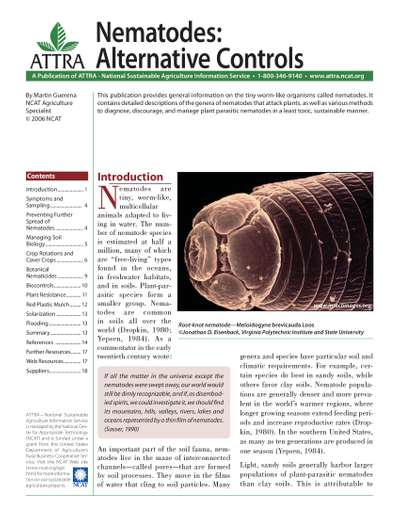More than 2 million farms dot the United States, covering about 40% of the land in America. The National Center for Appropriate Technology’s ATTRA Sustainable Agriculture program supports farmers, ranchers, agriculture educators, and land managers at every stage of their agricultural journey.
ATTRA, or Appropriate Technology Transfer for Rural Areas, is a trusted source of sustainable agriculture information and maintains a knowledge base of practical multimedia resources for farmers, ranchers, and educators. NCAT’s agriculture specialists work directly with farmers, ranchers, land managers, and others across the country to provide individualized technical assistance, offer practical learning opportunities, and facilitate meaningful connections among producers, experts, researchers, and industry professionals.
From the basics of starting a farm to marketing locally grown products, and from organic specialty crop production to regenerative livestock management, our sustainable agriculture specialists provide trusted, practical multimedia resources to nearly 35,000 farmers each year.
ATTRA was created in 1987 through a cooperative agreement with the U.S. Department of Agriculture Rural Development program.
18 Issues in this Publication (Showing 11 - 18) Previous
Nematodes: Alternative Controls
- Also available in:
- Español (es)
- English (en)
This publication provides general information on the tiny worm-like organisms called nematodes. A more detailed description of the genera of nematodes that attack plants is provided as well as various methods to diagnose, discourage and manage plant parasitic nematodes in a least toxic, sustainable manner.
Ruminant Nutrition for Graziers
- Also available in:
- Español (es)
- English (en)
Cattle, sheep and goats have the ability to convert plant carbohydrates and proteins into available nutrients for human use, making otherwise unusable land productive. However, proper care of the land and its grazing animals requires a sound understanding of ruminant nutrition. This publication provides managers with tools and references to consider biological and climatological variables and make decisions that ensure the ecological and economic viability of a grass-based ruminant livestock operation.
Meat Plants: Improving Profitability in Small and Very Small Operations
- Also available in:
- Español (es)
- English (en)
Small and very small meat plants in the U.S. typically struggle with extensive overtime costs, high turnover, high stress, production overcapacity, a declining rural customer base, declining profitability, and an extensive need for capital investment. This publication highlights small changes that have been made at some meat plants to solve common problems and increase profit that don’t require significant capital expenditure. In addition to small, low-capital changes, this publication highlights a basic methodology that meat-plant managers can use to create their own solutions to individual plant problems.
Micro-Scale Biogas Production: A Beginners Guide
- Also available in:
- Español (es)
- English (en)
Anaerobic digestion is a simple biochemical process by which waste products can be converted to energy. Using manure, plant waste, crop residue, food scraps, or other waste products, farmers can reduce their dependence on fossil fuels while saving money, reducing greenhouse gas emissions, and solving odor problems (not to mention producing high-quality compost fertilizer as a by-product). This publication provides a beginners guide to using anaerobic digestion to produce usable biogas on a small scale with a minimal investment.
For more information on biogas and a discussion of larger-scale, manure-based digesters for livestock operations, see the ATTRA publication Anaerobic Digestion of Animal Wastes: Factors to Consider.
Seeding Root Crops
- Also available in:
- Español (es)
- English (en)
As a nongenerational farmer, most of my agricultural experiences before entering the field of farming and food systems had huge impacts on my decision to farm, from childhood memories of wild blackberries to college-age harvesting of carrots.
Microgreens: Tiny Crops, Big Profits – A Nutritional Powerhouse for Farmers and Winter Menus
- Also available in:
- Español (es)
- English (en)
Tiny but mighty, microgreens are sprouting up on plates everywhere, adding a burst of flavor, vibrant color, and a hefty dose of nutrition to every dish. These miniature greens aren’t just a pretty garnish—they’re nutrient-packed powerhouses that can turn your meals and your income around. Whether you’re a foodie looking to elevate your culinary creations or an entrepreneur seeking a fresh business venture, microgreens offer a world of potential in every tiny leaf.
Take a look at your local supermarket, and you’ll find containers of microgreens ranging from radish and cruciferous blends to kale, wheatgrass, amaranth, and basil. But what exactly are microgreens, and how do they differ from sprouts?
Overview of Cover Crops and Green Manures
- Also available in:
- Español (es)
- English (en)
Crop rotations, green manures, and cover crops are the foundations of good farming. Crop rotation provides diversity that results in resilience, green manures cycle nutrients by feeding soil microbes, and cover crops protect the soil from erosion and nutrient loss. These practices ultimately result in soil aggregation, an essential principle of sustainable farming. This publication focuses on green manure and cover crops. To impart a sense of the importance of these practices in sustainable farming, it summarizes the effect of cover crops and green manures on organic matter and soil structure, soil microbial activity, nitrogen production, and soil and water conservation. It addresses management practices including green manuring, cover crop systems, termination to create a cover crop mulch, planting green, cover crops in high tunnels, the limitations of cover crops, and the economics of cover crops. This publication also provides a selection of resources for further reading, including regional resources and cover crop databases.
Companion Planting and Botanical Pesticides: Concepts and Resources - 2016-01-20
- Also available in:
- Español (es)
- English (en)
https://attra.ncat.org/publication/companion-planting-resources/
Certain plants can benefit others when planted in close proximity or used as botanical pesticides. This publication discusses the scientific and traditional basis for companion planting associations including trap cropping, weed suppression, physical-spatial interactions, and other relationships. It provides a companion planting chart for common herbs, vegetables, and flowers, as well as a listing of literature resources. An appendix provides information on the Three Sisters, a traditional Native American companion planting practice.







